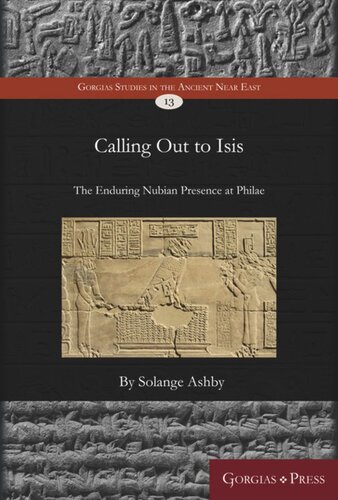

Most ebook files are in PDF format, so you can easily read them using various software such as Foxit Reader or directly on the Google Chrome browser.
Some ebook files are released by publishers in other formats such as .awz, .mobi, .epub, .fb2, etc. You may need to install specific software to read these formats on mobile/PC, such as Calibre.
Please read the tutorial at this link: https://ebookbell.com/faq
We offer FREE conversion to the popular formats you request; however, this may take some time. Therefore, right after payment, please email us, and we will try to provide the service as quickly as possible.
For some exceptional file formats or broken links (if any), please refrain from opening any disputes. Instead, email us first, and we will try to assist within a maximum of 6 hours.
EbookBell Team

5.0
70 reviewsEvidence of Nubian activity in the Egyptian temples of Lower Nubia spans a period of more than one thousand years: from a bark stand dedicated by the Kushite king Taharqa (690-664 BCE) to Nubian prayer inscriptions engraved in the mid-fifth century CE. Nubian priests, administrators, and worshippers were intimately involved in the hierarchy of Egyptian temples in Lower Nubia. For the first time, this book considers all Nubian prayer inscriptions - written in Demotic, Meroitic, and Greek - to reveal that Nubian piety at Philae occurred in three discrete phases in which very different groups of Nubians arrived at Philae to perform rites. Chapter one describes the Lower Nubian kings who arrived at Philae bearing tithes as decreed by Ptolemaic rulers who conquered Lower Nubia. Chapter two describes the annexation of Philae and Dakka by the rulers of Meroe who defended the temples militarily while supplying them with royal donations of gold. Meroitic royal cartouches at Philae and Dakka attest to the unfettered access obtained during this period. Of particular interest is the Feast of Entry, which exhibits many similarities to Meroitic royal funerary rites, performed by members of one Nubian family attested for eight generations at Philae and Dakka. Chapter three describes the priests who served the Blemmye kings in the fourth century CE, the last worshippers at the temples of Philae, whose rites were performed for Blemmye gods in addition to Isis and Osiris. This book argues that the enduring religious presence of Nubian worshippers, over a period of one thousand years, profoundly influenced the unique rites performed at the temples of Philae and Dakka, in addition to introducing the worship of Nubian gods into the temple cult. Drawing on comparanda from the Meroitic religious sphere, this book presents a complete overview of Nubian religion as practiced in the temples of Philae and Dakka.